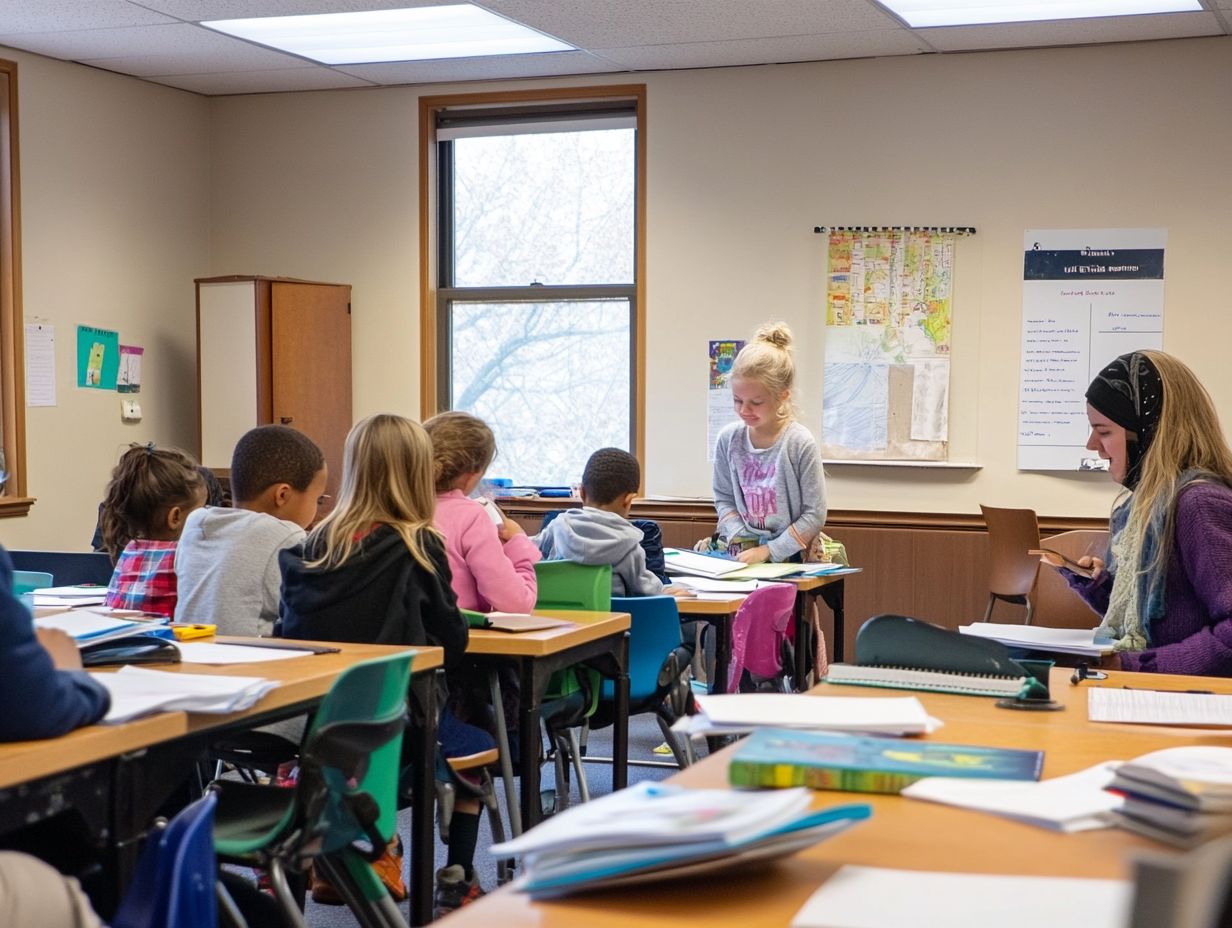Are There Age Limits for Certification Courses?
Certification courses represent a vital pathway for you to enhance your skills and advance your career.
You may wonder if there are age limits for these programs. This article delves into the essence of certification courses, examining the factors that influence age requirements. It also highlights the distinct benefits and challenges that students encounter at various stages of life.
By understanding certification courses, you can make informed decisions and fully capitalize on your educational opportunities, no matter your age.
Contents
- Key Takeaways:
- Overview of Certification Courses
- Age Limits for Certification Courses
- Benefits of Taking Certification Courses at Different Ages
- Challenges for Different Age Groups
- Guidelines and Recommendations for Age Limits
- Frequently Asked Questions
- Is there a minimum age requirement for certification courses?
- Are there any certification courses with no age limits?
- What is the average age range for participants in certification courses?
- Do age limits for certification courses vary by country?
- Can minors enroll in certification courses?
- Are there any exceptions to age limits for certification courses?
Key Takeaways:

- Certification courses have age limits that vary by course and industry.
- Younger students gain essential skills and knowledge early on.
- Older students can gain skills to advance their careers.
- Age guidelines stem from industry standards and best practices.
- Consider individual circumstances and readiness before enrolling.
Overview of Certification Courses
Certification courses in CPR are critical programs designed to equip you with essential skills needed to respond to medical emergencies, such as cardiac arrest.
These courses teach vital life-saving techniques and follow rigorous standards set by organizations like the American Heart Association.
Formats vary from online certifications to hands-on training sessions in community settings, ensuring you are prepared to perform CPR and use AEDs when emergencies arise.
This training helps create a safer environment for individuals across all age groups.
What are Certification Courses?
Certification courses are specialized programs crafted to give you the skills and knowledge necessary for effectively administering CPR and other life-saving techniques during emergencies.
These programs provide both theoretical insights and hands-on practice for a diverse audience, from eager young students to responsible adults.
Content includes detailed instruction on CPR techniques, the use of AEDs, and recognizing cardiac arrest symptoms.
For children, this training nurtures confidence and responsibility. For adults, it equips them to respond effectively in critical situations.
Ultimately, these courses are crucial for enhancing community safety by preparing you to respond to emergencies with competence and assurance.
Age Limits for Certification Courses
Age limits for CPR certification courses can vary considerably based on the organization offering the training. These requirements are designed for both youth and adult learners, ensuring that individuals across all ages can acquire essential CPR knowledge and skills. If you’re wondering if you can take certification courses without prerequisites, it’s worth checking the specific guidelines of the course provider.
Factors that Determine Age Requirements
Several factors influence age requirements for CPR certification courses. These include the complexity of training content, the physical strength needed for CPR techniques, and the psychological readiness to handle emergencies each varying significantly between children and adults.
Cognitive development affects how well someone understands emergency protocols and makes swift decisions under pressure. Your physical abilities are also crucial; having the strength to perform compressions effectively is essential for resuscitation.
Legal considerations, such as Good Samaritan Laws, encourage individuals to pursue certification by offering protections for those who act in emergencies.
These elements create a nuanced framework that determines suitable age thresholds for certification, ensuring participants are trained and capable of handling real-world scenarios with confidence. For more information on the options available, check out what types of certification courses are available.
Benefits of Taking Certification Courses at Different Ages

Enrolling in CPR certification courses at various stages of life presents many advantages. It enhances your awareness of medical emergencies and equips you with vital skills for the health and safety of your loved ones.
Fostering a culture of preparedness in your community contributes to saving lives in critical situations.
Advantages for Younger Students
Younger students can gain significant benefits from CPR certification courses. Early exposure to life-saving techniques fosters an understanding of medical emergencies and builds confidence in their ability to respond.
These youth training programs enhance their practical skills and improve information retention. This vital training boosts their chances of taking action when it matters most!
As they acquire these skills, they develop a sense of responsibility toward their community’s health, allowing them to take an active role in saving lives. These experiences also nurture empathy and a commitment to helping others.
Benefits for Older Students
For older students, enrolling in CPR certification courses equips them with practical skills and knowledge crucial for managing medical emergencies skills that can be especially beneficial for their families and communities.
These courses enable them to respond effectively in urgent situations, ensuring they can offer life-saving assistance when it s most needed. Not only does this training enhance their confidence, but it also boosts their employability; many organizations seek team members who are prepared for emergencies.
Whether acting in a personal or professional capacity, they find themselves capable of making informed decisions during critical incidents. This contributes to a safer environment for everyone around them.
This kind of preparation is invaluable, fostering resilience and a proactive mindset in the face of unforeseen challenges.
Challenges for Different Age Groups
Different age groups encounter distinct challenges when engaging in CPR certification courses.
Younger students often find themselves struggling with the physical demands of CPR, while older learners may wrestle with retaining skills and adapting to evolving CPR techniques.
Obstacles for Younger Students
Younger students often face hurdles in CPR education, including physical limitations that can make chest compressions challenging. They may also lack real-world context that underscores the significance of CPR techniques.
These obstacles can dampen their confidence and impede their ability to acquire essential lifesaving skills. Training programs can tackle these issues by using age-appropriate instructional methods, such as manikins specifically designed for smaller learners, boosting their engagement.
By integrating interactive scenarios that mimic real-life emergencies, students develop a deeper understanding of why CPR is vital. Interesting stories or compelling visuals can resonate with younger minds, making the material relatable and memorable.
Ultimately, adapting teaching strategies to cater to the unique needs of this demographic enables them to learn and perform CPR effectively.
Challenges for Older Students

Older students facing CPR training need to adapt quickly to the latest techniques. Mastering these skills is crucial for effective emergency response.
This challenge often stems from their past experiences and knowledge, which can differ considerably from current guidelines. As an adult learner, you bring a wealth of life lessons and firsthand encounters to the table, influencing how you approach new information.
It’s essential to practice regularly and take refresher courses. Regular engagement not only reinforces updated skills but also builds confidence for real-life emergencies.
Incorporating hands-on training sessions and facilitating peer discussions can significantly elevate your learning experience. This allows you to effectively bridge the gap between theoretical knowledge and practical execution.
Guidelines and Recommendations for Age Limits
Setting clear age guidelines for CPR certification is vital. This ensures your training meets industry standards, preparing you to handle emergencies with confidence!
This alignment not only maximizes learning outcomes but also enhances community preparedness. It equips individuals with the skills they need to respond effectively in emergencies.
Industry Standards and Best Practices
Industry standards and best practices for CPR training underscore the importance of offering courses that are age-appropriate, accessible, and aligned with the latest techniques and guidelines set forth by leading organizations. This approach ensures you not only acquire essential life-saving skills but also feel enabled to act with confidence in emergencies.
The qualifications of instructors are pivotal to the quality of your training. Certified trainers with current knowledge cultivate a deeper understanding of the material. Hands-on training is essential, allowing you to practice techniques in realistic scenarios, effectively bridging the gap between theory and action.
Organizations can create effective CPR training programs by focusing on these elements. This helps communities, including you, respond effectively in emergencies.
Frequently Asked Questions
Is there a minimum age requirement for certification courses?
Yes, some certification courses have a minimum age requirement.
Are there any certification courses with no age limits?

While many certification courses do have age limits, some do not have any specific age requirements. If you’re wondering about prerequisites, you might find it helpful to read about whether experience is necessary for certification courses. It is best to check with the institution offering the course to confirm.
What is the average age range for participants in certification courses?
The average age range for participants can vary depending on the course and institution. However, it’s common to see a wide range of ages, from teenagers to adults, in these courses.
Do age limits for certification courses vary by country?
Yes, age limits can vary by country. Always check with the specific institution for their requirements.
Can minors enroll in certification courses?
It depends on the specific course and institution. Some courses may have an age limit set at 18 years old, while others may allow minors to enroll with parental consent. Always check with the institution for confirmation.
Are there any exceptions to age limits for certification courses?
Yes, there can be exceptions. In some cases, minors may enroll with special permission. Always confirm with the institution.
Ready to enhance your emergency response skills? Check out our CPR certification courses today!






